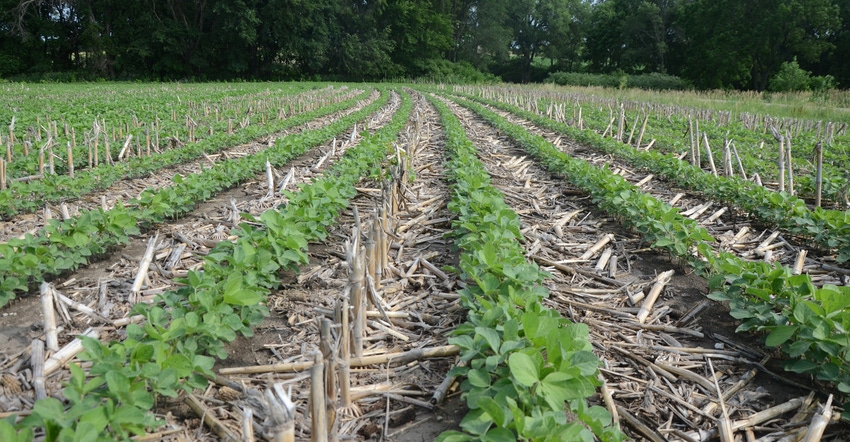September 22, 2020

As the production year ends, producers and managers will be analyzing 2020 and then looking ahead to 2021. Using 2020 production and financial records, including noted changes in beginning and ending inventories, a whole farm analysis including profitability calculations for the year can be completed.
Comparing cash flow projections with actuals for the year can help to understand changes in the cash position. At the same time, using existing records and preparing enterprise analyses for the year can provide detailed information for management decisions as we look ahead. And analyzing whole farm and enterprise information is a great starting point to budgeting for the new year.
Enterprise budgeting provides a foundation for creating a new year’s cash flow and pro forma profitability since all costs and returns for the various enterprises that make up a farm entity should be included.
The new Agricultural Budget Calculator (ABC) program under development in the University of Nebraska-Lincoln’s Department of Agricultural Economics will provide the opportunity to create farm enterprise budgets online with a whole farm cash flow projection as a built-in feature, useful when costs and returns are projected per each enterprise. Initial phases of the new Ag Budget Calculator program are now available to test.
In addition to financial and cash flow planning, enterprise budgets provide useful information in making management decisions. Key information derived from enterprise budgeting can assist in:
Comparing profitability potential between enterprises or to estimate costs and returns on new enterprises under consideration.
Tweaking production practices or inputs used in production. Is a proposed change in a production practice or the use of another product or input going to cost more than it is worth?
Determining breakeven levels above variable or cash costs; or all costs (including variable and fixed or all cash and non-cash overhead costs).
Marketing and pricing decisions after calculating the various breakeven levels.
UNL crop budgets, new developments
Dating back to at least the 1970s, the University of Nebraska-Lincoln has published annual crop budgets. The budgets are provided as guides with cost estimates for various cropping practice norms across Nebraska.
For 2020, 82 crop budgets representing 15 crops in Nebraska were published using Excel spreadsheet files and printable PDF files. Input into the Nebraska crop budgets is provided by a team of crop specialists and agricultural economists. Revenue projections and profitability estimates have not been included in the current crop budgets.
Work is underway to update and publish the 2021 UNL crop budgets. Producers will be able to view the 2021 budgets and download those that are like their own enterprises into the new Ag Budget Calculator program.
Using ABC, they can edit the budgets they downloaded or start from scratch and create their own 2021 budgets. The new program is designed to be user-friendly and allow budget customization by its users. Each user will create their own password so they can save and retrieve their budget information online from their computer or electronic devices when needed.
The ABC program is designed to lead producers through a series of data entry steps to reach an estimate of their various enterprises’ cost of production both on a cash and economic basis. Both operating costs and ownership costs, including cash and non-cash expenses along with revenue projections, will be entered into the program. Key information segments built into the program include:
Crop identification and enterprise name, the corresponding production year, anticipated yield, cropping system (irrigated or dryland), and land ownership or land lease information.
Annual rates and prices, such as fuel costs anticipated for the year, and interest rates.
Field operations, including labor and specific cost information of machinery and implements used in those operations.
Material and service costs associated with the field operation performed, for example, seed input cost information will be entered along with the planting operation, fertilizer and pesticide application rates, and costs will be entered along with the field operation when they are applied, and so on, with all material inputs and services.
Irrigation system information will be entered with operating and ownership costs calculated.
Revenue projections per enterprise will be entered by the user.
General farm overhead expenses will be entered and allocated to the various farm or ranch enterprises.
The development of the new budget calculator program focused initially on cost of production information for crop enterprises. Plans are to soon include livestock enterprise modules.
Later in the ABC program’s development, a whole farm cash flow feature will be included where producers can identify when they anticipate paying for cash expenses and enter additional financial information such as loan payments.
In the end, users will be able to utilize the ABC program to enter all their enterprise expenses and revenue projections to create a whole farm cash flow and projected income statement.
Learning curve
As with any new program, there will be a learning curve. Once producers have created an ABC program account used only by them, and after entering data for one or more enterprises for a given year, this information will be available and can be duplicated and modified to create additional enterprises for that same production year and subsequent years.
To create realistic enterprise budgets for a farm operation, keeping good records is critical. If accurate budgeting information is used, there are key management decisions that can be derived from cash and economic cost of production information and field or farm data tracking, both in the short term and over the long term.
If you are interested in testing the ABC enterprise budgeting program, especially for crops at this time, register at farm.unl.edu/testabc.
After your contact information is received, a link to the new program will be sent to you via email. Everyone that receives a test link will be asked to follow up with an evaluation so the program development can proceed with user feedback.
McClure is an Extension educator and farm and ranch management analyst in the Department of Agricultural Economics at the University of Nebraska-Lincoln.
You May Also Like




